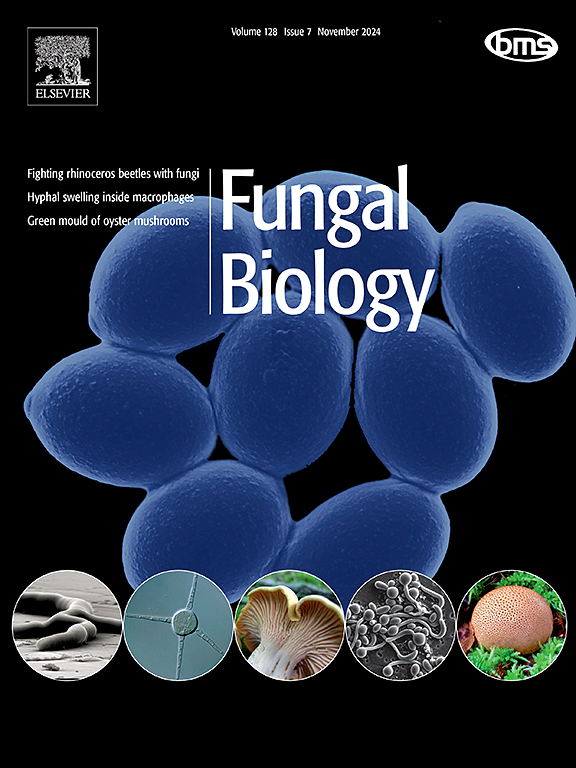鉴定平菇α-淀粉酶基因家族并分析其生长发育过程中的表达
IF 3
3区 生物学
Q2 MYCOLOGY
引用次数: 0
摘要
α-淀粉酶是调节碳水化合物代谢的重要酶,在动物、植物和微生物的生长发育中起着重要作用。然而,它在蘑菇中的作用尚不清楚。本研究在平菇(Pleurotus ostreatus)基因组中鉴定出分布在三条染色体上的8个PoAmy基因。根据它们的系统发育关系,这些基因被分为两个不同的亚科,并被保守基序的鉴定所证实。基因复制和同源性分析强调,PoAmys在其进化史上经历了强大的净化选择。此外,PoAmys中的顺式作用元件表明对光和激素调节的敏感性更高。基因本体(GO)和京都基因与基因组百科全书(KEGG)注释表明,PoAmys参与多糖代谢。转录组数据结合定量实时聚合酶链反应(qRT-PCR)结果表明,大多数成员在从菌丝阶段到成熟底物的整个生长发育过程中表现出显著的差异表达。本研究为进一步了解α-淀粉酶在P. ostreatus中的作用提供了有价值的见解,为今后的功能研究提供了平台。本文章由计算机程序翻译,如有差异,请以英文原文为准。
Identifying the Pleurotus ostreatus α-amylase gene family and analyzing its expression during growth and development
α-Amylase is a crucial enzyme modulating carbohydrate metabolism that holds a significant role in the growth and development of animals, plants, and microbes. However, its role in mushrooms remains unclear. This study identified eight PoAmy genes within the genome of Pleurotus ostreatus that were distributed across three chromosomes. These genes were categorized into two distinct subfamilies based on their phylogenetic relationships and corroborated by the identification of conserved motifs. Gene duplication and homology analyses highlighted that PoAmys have undergone potent purifying selection throughout their evolutionary history. Furthermore, the cis-acting elements within PoAmys indicated heightened sensitivity to light and hormonal regulation. Gene Ontology (GO) and Kyoto Encyclopedia of Genes and Genomes (KEGG) annotations suggested that PoAmys were involved in polysaccharide metabolism. Transcriptome data coupled with quantitative real time polymerase chain reaction (qRT-PCR) results indicated that most members exhibited significant differential expression throughout growth and development, from the mycelial stage to the mature substrate. This study provides valuable insights into the role of α-amylase in P. ostreatus, providing a platform for future functional studies.
求助全文
通过发布文献求助,成功后即可免费获取论文全文。
去求助
来源期刊

Fungal biology
MYCOLOGY-
CiteScore
5.80
自引率
4.00%
发文量
80
审稿时长
49 days
期刊介绍:
Fungal Biology publishes original contributions in all fields of basic and applied research involving fungi and fungus-like organisms (including oomycetes and slime moulds). Areas of investigation include biodeterioration, biotechnology, cell and developmental biology, ecology, evolution, genetics, geomycology, medical mycology, mutualistic interactions (including lichens and mycorrhizas), physiology, plant pathology, secondary metabolites, and taxonomy and systematics. Submissions on experimental methods are also welcomed. Priority is given to contributions likely to be of interest to a wide international audience.
 求助内容:
求助内容: 应助结果提醒方式:
应助结果提醒方式:


